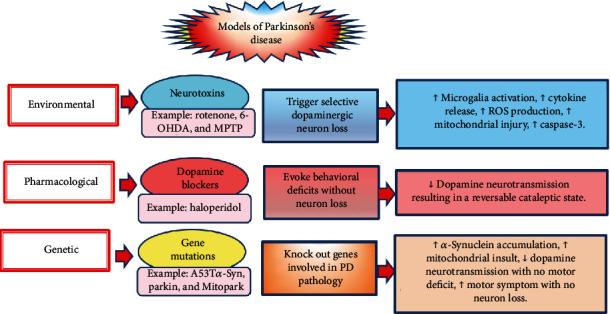Figure 3.

Various experimental models of Parkinson's disease. Multiple experimental models of PD have been developed. They are distinguished into 3 classes. Environmental models of PD are produced by numerous neurotoxins, which selectively induce dopaminergic neurodegeneration via mechanisms that involve induction of neurodegeneration through increased production of free radicals, inflammation, and mitochondrial dysfunction. Pharmacological models produce clinical manifestations of PD, e.g., catalepsy and dyskinesia without alterations in neuron structure or function—they block dopamine activity. Genetic models are miscellaneous, and they are produced through induction of gene mutations related to dopamine neurotransmission, mitochondrial function, and protein misfolding (α-synuclein). ↑ denotes increase; ↓ denotes decrease; PD: Parkinson's disease; MPTP: 1-methyl-4-phenyl-1,2,3,6-tetrahydropyridine; 6-OHDA: 6-hydroxydopamine; ROS: reactive oxygen species; caspase-3: cysteine-aspartic acid protease 3.
